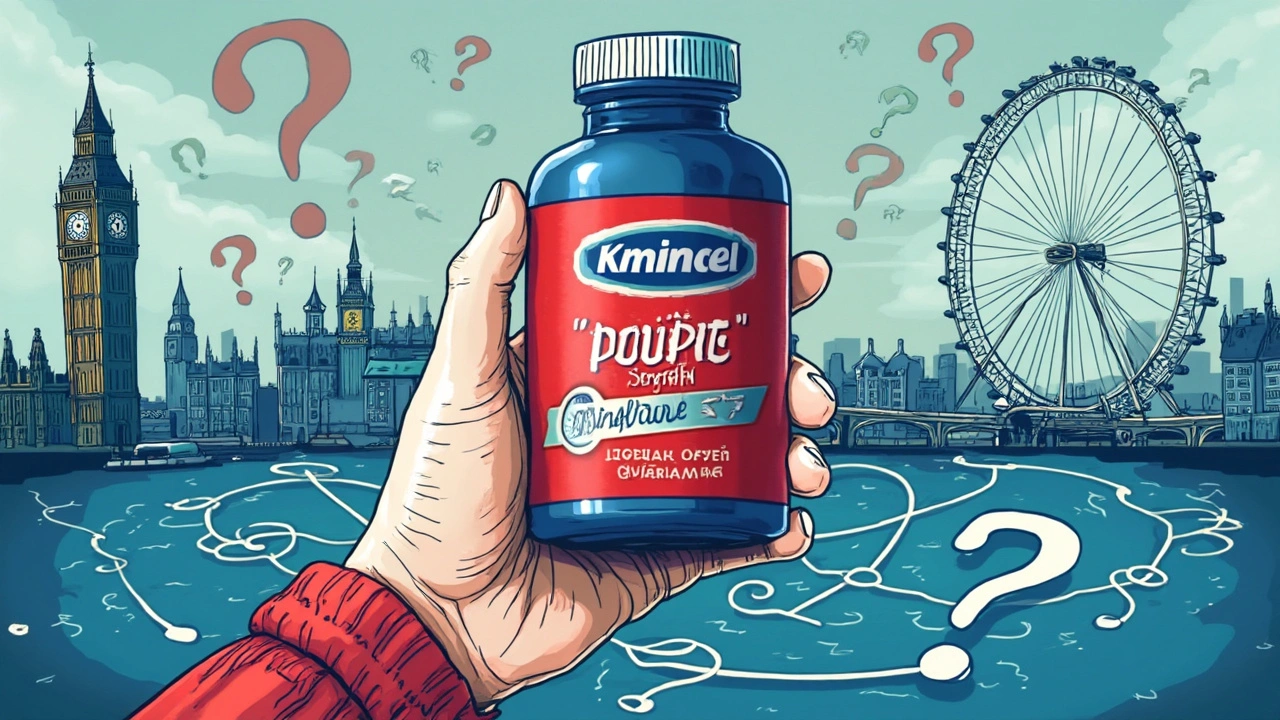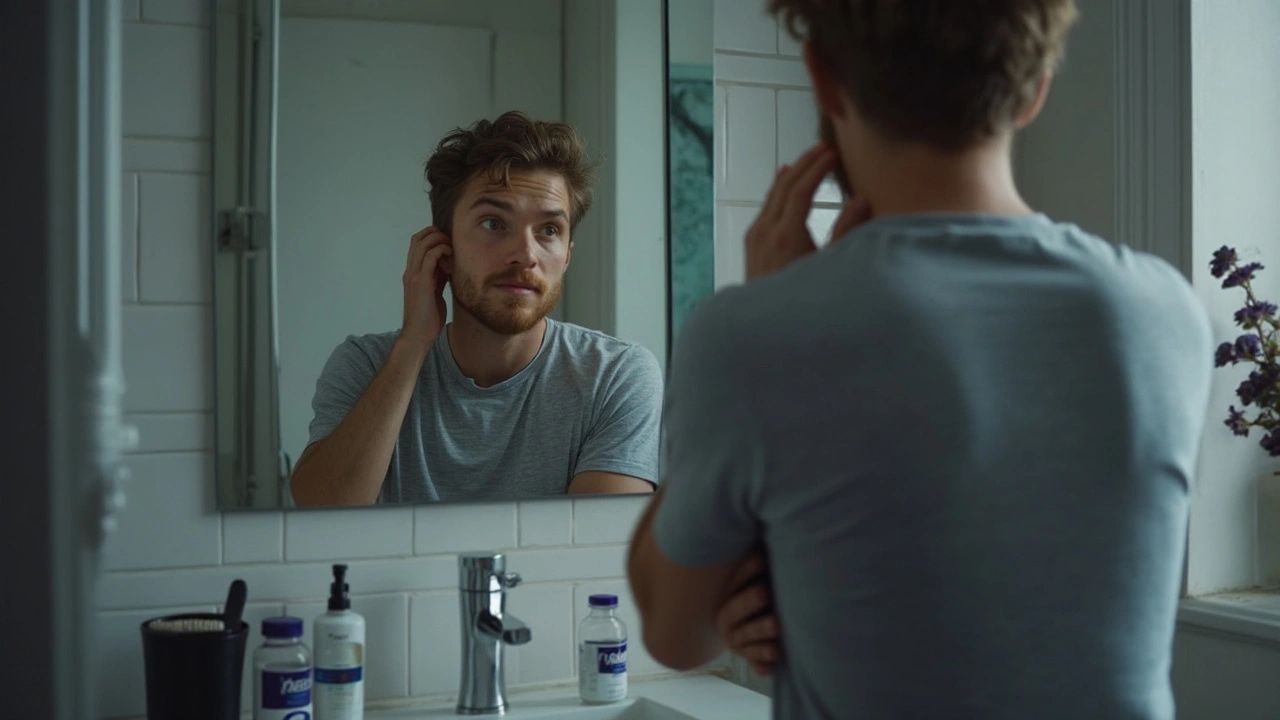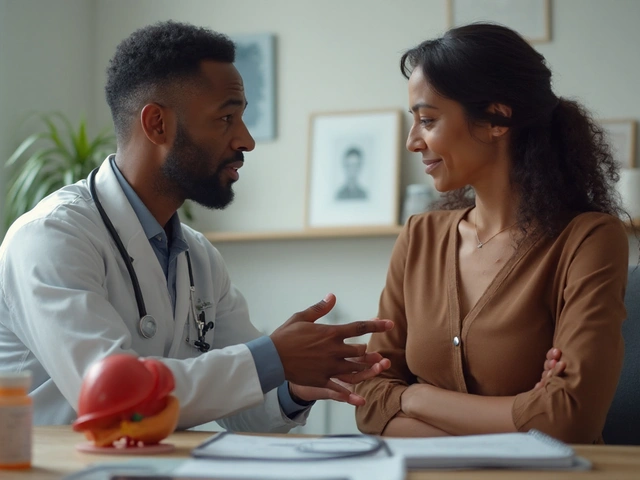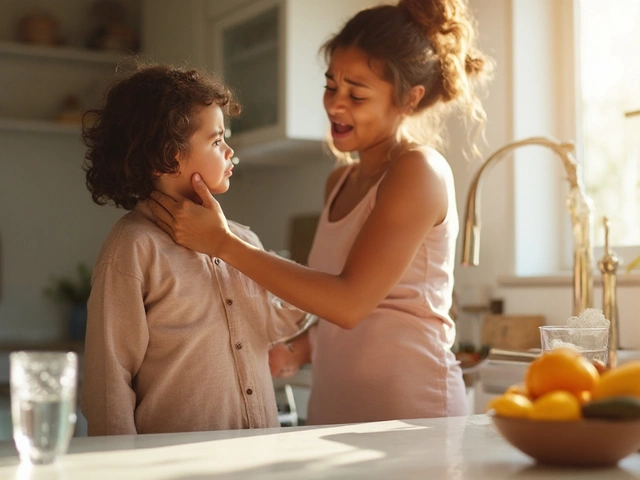Picture this: You catch your reflection and notice a little more scalp showing than last month. Maybe it’s a thin patch up front, or maybe your hairline’s doing a slow fade. Now, everyone’s got an opinion on what to do next, but Rogaine (the classic minoxidil liquid or foam) always sneaks its way into the mix. Some folks say it’s a miracle, others swear it’s a waste, but the truth is way more interesting—and less black-and-white—than you’d think.
What Is Rogaine and How Does It Actually Work?
First off, Rogaine is a brand name for minoxidil. The stuff got its start not as a hair product but as a blood pressure med back in the 1970s. Here’s a wild fact: doctors noticed that people taking minoxidil started growing hair in unexpected places. Talk about a surprising side effect! Eventually, someone put two and two together, slapped it on thinning scalps, and by 1988, Rogaine (aka topical minoxidil) landed on pharmacy shelves for anyone with a receding hairline or thinning crown.
Minoxidil works by widening blood vessels where you apply it. This boosts blood flow and brings more nutrients to sleepy hair follicles. But it’s not just about feeding follicles—the drug also extends the growth phase of the hair cycle. Usually, a hair follicle churns out a strand for 2-6 years (growth phase), then rests and sheds. In folks losing hair, the cycle speeds up and the growth phase gets cut short. Minoxidil helps drag that out, so the hairs don’t bail so quickly.
Here’s a key point: minoxidil doesn’t "wake up" the dead. If you’ve been bald in a spot for a decade, Rogaine probably won’t make much happen there. But for hair that’s just starting to thin, or areas where the follicles aren’t totally gone, it can really help. In clinical trials, about 40% of users saw moderate to significant regrowth on the crown. It’s more about holding the line—slowing loss, thickening thin patches—than rewinding the genetic clock. And here’s something people often get wrong: minoxidil isn’t just for men. There’s a separate line and dose for women, now sold over the counter all over Australia (and pretty much every drugstore worldwide).
Let’s get into stats for a sec. According to a well-known 2002 study published in the Journal of the American Academy of Dermatology, nearly 50% of men who used 5% minoxidil solution had moderate to dense hair regrowth after a year. Still, a chunk didn’t see much, and some stopped using it due to skin irritation or the classic "itchy scalp." Rogaine foam—the newer kid on the block—was made to be less greasy and less likely to drip down your forehead.
| Minoxidil Concentration | Regrowth Success Rate | Typical Side Effects |
|---|---|---|
| 2% Solution | ~30% | Itchy scalp, mild shedding |
| 5% Solution | ~40-50% | More irritation, better results |
One thing Rogaine is not: a cure. Miss a few weeks, and the clock resets—any new growth is gone in 2–4 months. It’s a lifetime commitment if you want to keep what you’ve gained. Annoying? Maybe. But for people who feel self-conscious about thinning hair, it’s still better than nothing—and miles safer than sketchy unproven treatments you’ll find online.

Tips for Getting the Best Results With Rogaine
Ready to try Rogaine? Don’t just slap it on and hope for the best—half the reason people don’t get results is down to lousy application habits or giving up too soon. Let’s break down what actually works and what real users wish someone had told them from the start.
Consistency makes or breaks the whole thing. Minoxidil needs to be used twice a day, every day. Miss days here and there, and you’re basically asking for disappointment. Pick two solid times, like when you get out of bed and before you hit the pillow. It dries in about 20 minutes, so you’re not stuck with wet hair all morning. Don’t wash it out—let the scalp soak it up. Applying to wet hair is fine, but the scalp should be mostly dry so it doesn’t just run off.
Start by cleaning your scalp. If you use styling stuff like waxes, gels, or dry shampoo, give your head a wash before Rogaine goes on. Otherwise, the minoxidil just sticks to the product, not your skin. For best results, dropper or foam it directly onto the parts you can see thinning, then massage gently for a few seconds. A lot of guys use way too much, thinking more equals faster results, but that just wastes product and doesn’t speed things up. Stick to the label dose—usually 1ml or a half cap of foam—unless your doctor says otherwise.
Expect some weirdness at the start. The dreaded "shedding phase" hits maybe two weeks in, and it freaks a lot of people out. Your old hairs fall out faster so room’s made for thicker new ones. Most people think the treatment is making things worse, but if you push through that scary month or so, you’ll be glad you stuck it out. Visible results usually take 3 to 6 months, sometimes even a full year. Be patient—grab some before pics and compare every couple of months.
Watch for irritation. Red, flaky, or itchy scalp is the top reason people quit. Foam formulas are usually easier on sensitive skin, and switching from the liquid can make a big difference. If your scalp’s angry, try using a gentle shampoo (no harsh sulfates) or ask your doctor about steroid lotions for bad cases. And remember: Rogaine can end up in random places if you’re not careful. Wash your hands after applying, or you risk hair popping up where you don’t want it—like the backs of your fingers!
Pairing minoxidil with a low-level laser comb or derma roller? There’s buzz around both, and you’ll see tons of “before and after” shots online. There’s some real science behind micro-needling, which can make minoxidil absorb better (a 2013 study found 82% of folks improved using both, compared to 4% using minoxidil alone). Just don’t go nuts and tear up your scalp—go for 0.5mm needles, nothing industrial-sized, and sanitize, sanitize, sanitize. And if the thought of needles makes you queasy—stick to the foam and patience approach.
Got colored or permed hair? No worries; both liquid and foam are safe, but you might notice a bit of dryness or irritation for the first couple of weeks. Avoid applying other scalp products (say, anti-dandruff shampoos or thick pomades) within an hour of minoxidil—that way, you won’t tangle up the effects. And don’t double up the dose hoping for overnight miracles, or you’ll just waste your cash and rattle your scalp.
Set realistic goals. Most people notice some thickening and less shedding, especially at the crown, but not everyone grows a whole new mane. If you’re using Rogaine for a year with zero change, talk to a dermatologist. Some folks just don’t respond, and there are other medical reasons for hair loss that minoxidil can’t touch.

What No One Tells You: Side Effects, Common Myths, and What It Can’t Do
Now, here’s where things get real. Walk into any pharmacy and you’ll hear wild stories. That Rogaine will regrow hair anywhere you want. That it’ll thicken your beard or eyebrows, or that it’s a "miracle." Let’s untangle the truths from the urban legends.
First, side effects. The most frequent one? An itchy, red, or flaky scalp. If you’re unlucky, you might see more hair on your face—especially if the liquid drips during application. That’s why foams are popular. Rarely, people react with swollen hands or feet, rapid heartbeat, or weight gain. If that’s you, stop using and talk to a doctor ASAP. Most side effects stay local to the scalp, especially at over-the-counter doses.
What about facial hair and beards? You’ll see claims online about people using Rogaine to thicken patchy facial hair. And yes, minoxidil can sometimes spark growth in those vellus (peach fuzz) hairs. But Rogaine isn’t medically approved for beards, so you’re using it off-label, and side effects (skin irritation, risk of dry lips, facial swelling) are more likely. If you’re game, do your homework and don’t mix D-I-Y instructions with medical advice. Ask a derm before you start painting your face with minoxidil—especially if your skin tends to react to new stuff.
Rogaine can’t do everything. It doesn’t work for everyone, doesn’t bring back hair to fully bald spots, and can’t fix hair loss from medical conditions like alopecia areata, thyroid problems, or scars. Also, if you stop, any fresh growth disappears pretty quickly. There’s no "holiday" from minoxidil—think of it like brushing your teeth for your scalp. Miss enough days, and it’s all undone.
Lots of people worry about "accelerated hair loss" if they stop. This isn’t true—your hair will just go back to the same level it would have hit if you’d never started. Yes, it feels dramatic because you see all your gains fade in a couple of months, but minoxidil isn’t damaging your baseline hair. It’s just pausing your genes for a bit, not changing what’s coded in them.
Kids, pregnant women, and people with certain health issues should steer clear. Minoxidil hasn’t been tested for kids or in pregnancy, so give it a wide berth if there’s any risk there. Women using it for the first time should stick to the foam or the 2% formula.
Pro tip: label says store at cool room temperature. In Sydney’s steamy summers, keep your bottle in a cool, dry drawer—not a baking-hot bathroom shelf. Extreme temps can break down the product and kill its strength.
Want to stack your chances? Rogaine plays well with oral finasteride—a DHT blocker that targets the root hormones behind male pattern baldness. Studies show using both together almost doubles your odds of real regrowth, because you hit both blood flow and hormones. Finasteride has its own baggage (think potential sexual side effects), so talk to a proper GP or hair loss specialist before you start playing pharmacist at home.
If you’ve got the DNA for it, some thinning is going to happen with age—it’s just the roll of the dice. The trick is figuring out your comfort level and how far you want to go to get ahead of it. Rogaine’s not glamorous, and it won’t give you rock star hair overnight. But for a huge chunk of people, it’s earned its place on the bathroom shelf because it does something—sometimes all you need is that bit of control when everything else feels stacked against your genes.
Rogaine isn’t a miracle, but for folks in the early game of hair thinning, it’s worth a genuine shot. Use it smart, expect a few bumps along the way, and never buy into the hype that you’ll be Samson, just with a $60 foam and some patience. The best part? You actually get to call the shots—one drop (or foam cap) at a time.





While the article presents an earnest overview, it glosses over the fact that minoxidil’s efficacy is, at best, modest and highly variable. The cited 40‑50 % success rate stems from controlled trials that exclude real‑world adherence issues. Moreover, the discussion of side effects neglects the long‑term dermatological implications of chronic vasodilation. One must also consider the substantial financial burden of a product that demands indefinite use. In short, Rogaine is a stop‑gap, not a solution, and the piece would benefit from a more skeptical appraisal.
Thank you for the comprehensive synthesis; it admirably balances scientific detail with practical guidance. 🙏 The inclusion of both male and female formulations underscores the importance of gender‑specific considerations in dermatologic therapy. 🌍 Your emphasis on consistent application and the shedding phase offers much‑needed reassurance to newcomers. I would add that consulting a board‑certified dermatologist can further personalize treatment plans. Overall, a valuable resource for anyone navigating hair‑loss concerns. 😊
Oh sure, just slather some foam on your scalp and watch the secret government labs lose their grip on the population. 🙄 The article conveniently ignores the fact that minoxidil was originally a blood‑pressure drug-how else could the “big pharma” have been pushing a hair‑growth agenda all along? And don’t even get me started on the micro‑needling hype; it’s probably a covert way to get us all poking our heads into the abyss of surveillance. At least they mention the need for a dermatologist, because who else will tell you the truth?
lol rogaine works kinda but my scalp still itchy 😂
Totally get the frustration of missed weeks-consistency really is the hidden hero here. Keep those twice‑daily applications locked into your routine, maybe set a phone alarm as a reminder. If the initial shedding scares you, remember it’s just old hair making room for potentially thicker strands. Celebrate the small wins, like reduced shedding or a bit more density at the crown. You’ve got this, and the patience you invest now could pay off in confidence down the line.
Embarking upon the Rogaine regimen is akin to stepping onto a grand stage where each droplet of solution performs a delicate ballet upon the scalp’s vasculature. The pharmacologic crescendo-vasodilation-delivers a torrent of nutrients, coaxing dormant follicles from their slumber. As the hair‑growth phase elongates, one observes a subtle yet undeniable thickening, like mist condensing into a palpable veil. Yet, the drama does not end there; the notorious shedding phase erupts like an intermission, reminding us of nature’s ruthless choreography. Patience, therefore, becomes the protagonist, guiding us through months of anticipation toward the climactic resurgence of strands. Ultimately, this saga underscores the profound truth that perseverance, coupled with disciplined application, can rewrite the script of one’s own appearance.
Wow, another miracle cream that costs as much as a small car payment-totally not a scam, right? The article even says you gotta keep using it forever, like some cultish commitment. And if you get an itchy scalp? Yeah, just ignore it and hope the hair shows up eventually. Honestly, seems like a clever way to sell more foam while we’re stuck watching our own hair disappear.
Behold, the saga of Rogaine-an odyssey that begins not in the sterile corridors of dermatology but in the gilded halls of pharmaceutical alchemy. From its humble origins as a vasodilator for the hypertensive elite, it was reborn, phoenix‑like, into an elixir for the crown‑weary masses. Yet, the narrative spun by marketers masks a truth as stark as a winter’s dawn: the potion offers only a tentative reprieve, not a triumphant resurrection. One must first confront the ritualistic discipline of bi‑daily applications-an act that borders on monastic devotion. The shedding phase, that cruel interlude, strips away the remnants of the past, leaving the user bereft and bewildered. But fear not, for this crucible of loss is the very furnace that forges new growth, if one possesses the resolve to endure. Clinical trials whisper of a 40‑percent success, yet these figures are gilded, omitting the countless souls who abandon the regimen after a fortnight of irritation. The scalp, that delicate canvas, may react with redness, dryness, or an uninvited cascade of facial hair-an ironic testament to the drug’s indiscriminate potency. Moreover, the specter of dependency looms, a silent pact that the moment you falter, the hard‑won strands slip away like sand through fingers. Pairing minoxidil with laser combs or derma rollers sounds like a symphony of innovation, yet one must tread lightly, lest the scalp’s integrity be compromised. In the realm of aesthetics, no miracle cures exist; each promise is a measured compromise between expectation and biology. Thus, the sagacious traveler approaches Rogaine with tempered optimism, armed with the knowledge that consistency is the keystone of any triumph. Remember, the journey is not for the faint‑hearted; it demands patience, vigilance, and an unwavering belief in incremental progress. And when the mirror finally reflects a modest thickening, celebrate that humble victory, for it is the culmination of countless disciplined droplets. In the grand tapestry of personal grooming, Rogaine occupies a modest, yet undeniably intriguing, niche-one that rewards the diligent and chastises the indifferent.
Hey, I’ve been where you are-trying Rogaine and feeling like progress is slow. Keep using it every day, even if the shedding scares you, because that’s normal. If your scalp gets itchy, a gentle, sulfate‑free shampoo can help. Talk to a dermatologist if nothing changes after a year. You’re doing the right thing, stay patient!
Rogaine can work if you stick to it. Just don’t give up early
I appreciate the balanced overview you provided; it’s rare to see both benefits and limitations laid out so clearly. For those considering a combined approach, a dermatologist can help determine if finasteride is appropriate alongside minoxidil. Managing expectations is key-most users see modest improvement rather than a full comeback. If irritation arises, switching to foam and using a mild cleanser often alleviates discomfort. Keep monitoring progress with photos; visual evidence can be motivating.
Consistent application yields modest gains; stop and you lose them.